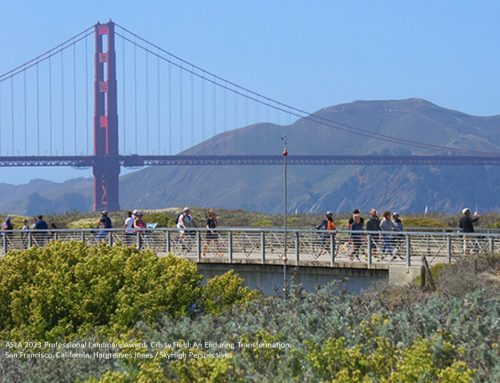by Alicia Rennoll
In 2018, California passed Proposition 68 to inject $4.1 billion into the state and local parks, water infrastructure projects, environmental conservation, and flood protection projects, according to Ballotpedia. Part of the state's plan is to make the great outdoors more accessible to California's growing population. To make this plan even better, designers should focus on creating environments that are accessible to people regardless of their ability or disability. However, accessibility should not be limited to only making outdoor space paths wide and smooth enough for wheelchairs.
Technology changing accessible landscape architecture
One way you can make outdoor spaces accessible to people with disabilities is through the use of smart wearables and smartphones. You can implement this by placing sensors in strategic areas of the outdoor space, which can communicate with people's wearable or smart devices. For example, at the Southern Cross train station in Melbourne Australia, there is a beacon navigation system that sends audio cues to the visually impaired via smartphones providing directions, flagging elevators and so on. This can also be implemented in parks, playgrounds and other outdoor spaces. A system that uses Bluetooth audio cues for navigation purposes may be better because it helps people using both Apple and Android devices.
Wayfinding apps for accessibility
Another way to use technology to enhance accessibility in landscapes is by creating digital maps that suggest accessible routes in outdoor spaces. These maps can show users hilly areas that may limit mobility or busy paths that may not be friendly to people with limited mobility. In fact, the University of Washington's Taskar Center for Accessible Technology created a way-finding app called AccessMap. AccessMap is designed to help people with limited mobility plan accessible routes before they enter a destination. Digital maps are great because they are easier to update when an outdoor space is undergoing renovation or when a path is blocked. The effectiveness of these maps can be enhanced further if braille sign boards are added in strategic areas of a park.
Climate change in accessible landscape design
Sadly, California is bearing the brunt of climate change, which manifests itself through frequent forest fires that have damaged property worth billions, and ended many innocent lives. Since people with mobility issues have a harder time evacuating an area, it is crucial to design outdoor spaces that do not catch fire easily, and can withstand extreme weather conditions.
One way to do this is by focusing on designing landscapes with plants that are less likely to catch fire, such as succulents. For example, Dudleyas native to California such as Dudleya albiflora, Dudleya anomala, Dudleya densiflora, Dudleya brittonii and other plants with water-filled leaves do not catch fire easily. In fact, one of the main landscape architecture trends in 2018 was adding native drought resistant plants to residential landscapes, according to a 2018 American Society of Landscape Architects (ASLA) report.
As communication technologies continue advancing, landscape architects should find ways of using them to enhance accessibility in outdoor spaces. Accessible design encourages people to fully participate in the outdoor or indoor environment.




